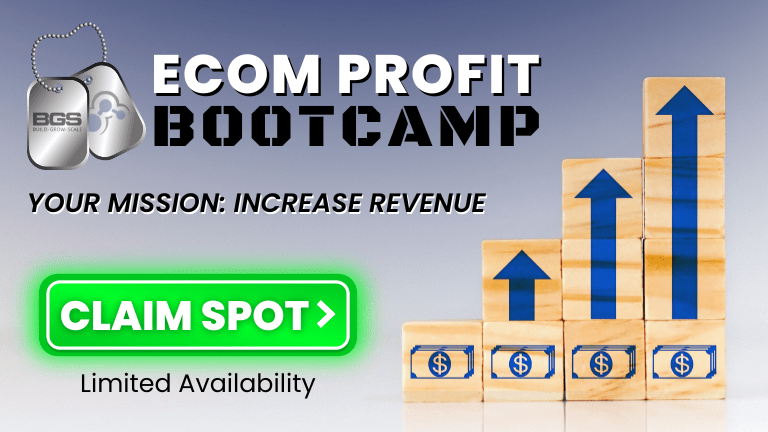What is Website Traffic – How to Analyze it for Better Results

james backenstose | Jun 22, 2023
Reading Time: 7 minutesYou’re in control of your website, but are you aware of the traffic it receives? Understanding what is website traffic and analyzing it can lead to significant improvements in user experience and overall business growth. If you’re not paying attention to the various channels that contribute to your site’s visitors, you could be missing out on valuable opportunities to optimize and capitalize on their potential.
Don’t worry, though – we’re here to help you navigate the world of website traffic analysis. In this article, we’ll explore the different channels that drive traffic to your site, dive into the essential metrics and tools you need to evaluate your site’s performance and show you how to leverage this data to create a better user experience and drive business growth.
By the end of this guide, you’ll have a firm grasp on the ins and outs of website traffic, empowering you to make data-driven decisions that put you in control of your online success.
Understanding Website Traffic and Its Importance
You’ve got to understand website traffic and its importance to truly unlock the potential of your online presence and boost your results. Website traffic refers to the number of visitors and visits (sessions) a website receives. It’s a key indicator of the health and effectiveness of your online presence.
By analyzing your website traffic, you can identify trends, measure the success of your marketing efforts, and make data-driven decisions to improve your website and overall online strategy.
To gain control over your website’s performance, start by tracking key metrics such as the number of visitors, page views, bounce rate, average session duration, and conversion rate. These metrics will provide you with valuable insights into user behavior, engagement levels, and the effectiveness of your content.
For example, a high bounce rate could indicate that your website’s content or user experience is not meeting the expectations of your visitors, whereas a high conversion rate signifies that your website is successfully persuading visitors to take a desired action.
By regularly analyzing your website traffic and making necessary adjustments, you can optimize your online presence for better results. Use tools like Google Analytics to monitor your traffic data and identify areas of improvement.
Look for trends in user behavior, such as the most popular pages or common exit points, and use this information to refine your content strategy.
Keep an eye on your website’s performance and make data-driven decisions to ensure that your online presence is always improving, ultimately leading to increased traffic, engagement, and conversions.
Different Channels for Website Traffic
Discovering various channels for driving visitors to your site can significantly boost your online presence and help achieve your goals. Each channel represents a unique opportunity for attracting a specific audience, which is crucial for creating a diverse and robust online presence.
By understanding the different channels available, you can develop targeted strategies to increase your website traffic and achieve better results. Some of the most effective channels for driving website traffic include organic search, paid search, social media, email marketing, and referral traffic.
Organic search refers to users finding your site through search engines like Google, while paid search involves running ads on search engine results pages. Social media channels, such as Facebook, Twitter, and Instagram, can be leveraged to share content and engage with users, driving them back to your site. Email marketing remains a powerful tool for driving repeat visits and building relationships with your audience. Lastly, referral traffic comes from other websites linking to your content or from sources like online forums, blog comments, or guest posts on other websites.
By focusing on these different channels, you can build a comprehensive approach to driving website traffic. Analyze your current performance in each channel, determine which ones are the most effective for your specific goals, and allocate your resources accordingly. Don’t be afraid to experiment with different tactics within each channel, as this can help you find the most effective strategies for your site.
As you continue to optimize and refine your approach, you’ll see increased website traffic, better user engagement, and ultimately, greater success in achieving your online goals.
Analyzing Website Traffic: Metrics and Tools
It’s essential to understand your site’s performance by examining key metrics and utilizing various tools, as this will help you make informed decisions and improve your online strategy.
By analyzing your website traffic, you can identify patterns, trends, and areas for improvement. Here are some crucial metrics you should be tracking: the total number of visitors, average time spent on site, bounce rate, conversion rate, and traffic sources. Each of these metrics provides valuable insights into how your audience is engaging with your site, and where there may be room for improvement.
To track these key metrics, you can use tools like Google Analytics, which is a powerful, free tool that provides a wealth of data about your website’s performance. With Google Analytics, you can track your traffic sources, monitor user behavior, and even set up goals to measure the success of specific actions on your site.
Another useful tool is SEMrush, which offers comprehensive insights into your site’s keyword rankings, competitor analysis, and SEO health. By combining the data from these tools, you can make data-driven decisions to optimize your site’s performance and attract more high-quality traffic.
As you analyze your website traffic, it’s important to remember that improvements won’t happen overnight. Regularly monitoring your site’s metrics and applying your new insights to your strategy will help you make continuous progress.
Keep an eye on trends over time, and don’t be afraid to make changes and test their effectiveness. By staying proactive and informed, you’ll be well on your way to driving more traffic, increasing engagement, and ultimately achieving better results for your website.
Using Website Traffic Analysis to Improve User Experience
Imagine the thrill of seeing your users truly enjoying their time on your site, effortlessly navigating through pages and engaging with your content, all thanks to your diligent analysis and optimization efforts. To achieve this level of user satisfaction, you need to understand how your visitors interact with your website and identify areas for improvement.
Website traffic analysis provides you with the data necessary to make informed decisions about your site’s design, content, and functionality, ultimately leading to a better user experience. Start by examining key metrics such as bounce rate, session duration, and pages per session. A high bounce rate may indicate that your landing pages are not resonating with your audience, or that your site’s navigation is confusing.
Longer session durations and more pages per session suggest that users are finding your content engaging and are exploring your site. Additionally, pay attention to the devices and browsers your visitors are using, as this can help you optimize your site for different platforms and screen sizes. Use tools such as Google Analytics, Hotjar, and Crazy Egg to dive deeper into user behavior, including click maps, heatmaps, and scroll depth analysis.
As you gather insights from your website traffic analysis, implement changes and improvements to your site. For instance, you may find that your calls to action are not as effective as they could be, or that users are struggling to find certain information. By addressing these issues and continually monitoring your site’s performance, you’ll create a more enjoyable and intuitive experience for your users.
Remember, a happy user is more likely to become a loyal customer, share your content, and recommend your site to others, ultimately driving more traffic and success for your online business.
Leveraging Website Traffic for Business Growth
You’ve got the power to transform your online presence and boost your business growth by effectively leveraging data gathered from user interactions on your site. By understanding and analyzing your website traffic, you can identify trends and patterns that will help you make informed decisions about how to improve user experience, expand your reach, and ultimately drive more sales.
It’s all about taking control of the data and using it to your advantage – a skill that successful business owners know is key in today’s digital world. One of the most important aspects of leveraging website traffic for business growth is setting clear goals and key performance indicators (KPIs). This will help you track your progress and determine if your efforts are paying off.
Analyzing data such as conversion rates, bounce rates, and average session duration can provide valuable insights into user behavior and preferences. By closely monitoring these metrics, you can identify areas for improvement, make informed decisions about your marketing strategies, and optimize your website for better results.
The power to grow your business through website traffic doesn’t stop with just analyzing the data. You must also take action and implement changes based on your findings. This might include updating website content, improving site navigation, or investing in targeted advertising campaigns.
Remember, the key to leveraging website traffic for business growth is to continuously test, analyze, and refine your strategies. By doing so, you’ll gain the control you crave and steer your business towards a successful and profitable future.
Frequently Asked Questions
What are some common mistakes to avoid when analyzing website traffic data?
Avoid common mistakes when analyzing website traffic data, such as overlooking mobile users, focusing solely on page views, and ignoring bounce rates. Keep an eye on user behavior and conversion rates for better control.
Can I get real-time updates on my website traffic, and how can I use that information effectively?
Yes, you can get real-time updates on your website traffic using analytics tools. Harness this data to identify trends, make quick adjustments, and optimize user experience, giving you greater control over your site’s performance.
How do I identify and manage potential sources of fake or spam traffic to my website?
Identify and manage fake or spam traffic by monitoring traffic sources, analyzing visitor behavior, and using tools like Google Analytics. Set up filters, use CAPTCHAs, and block suspicious IP addresses to regain control.
Are there any industry-specific factors to consider when analyzing website traffic for my particular business niche?
Absolutely! Consider your niche’s seasonality, target audience behavior, and industry trends when analyzing traffic. Leverage competitor insights and customer preferences to identify growth opportunities and make data-driven decisions for better results.
How can I effectively analyze website traffic on mobile platforms, and how does it differ from desktop traffic analysis?
To effectively analyze mobile traffic, focus on metrics like load time, bounce rate, and mobile-specific user behavior. This differs from desktop analysis, as users interact differently on mobile devices, requiring tailored optimization strategies.
Conclusion
In conclusion, understanding and analyzing your website traffic is crucial for your online success. By tracking the right metrics and using the appropriate tools, you’ll gain valuable insights into your audience’s behavior, preferences, and needs.
Leverage this data to optimize user experience and drive business growth. As you continue to monitor and analyze your traffic, you’ll be able to make informed decisions and adjustments, ensuring that your website stays relevant, engaging, and effective.





